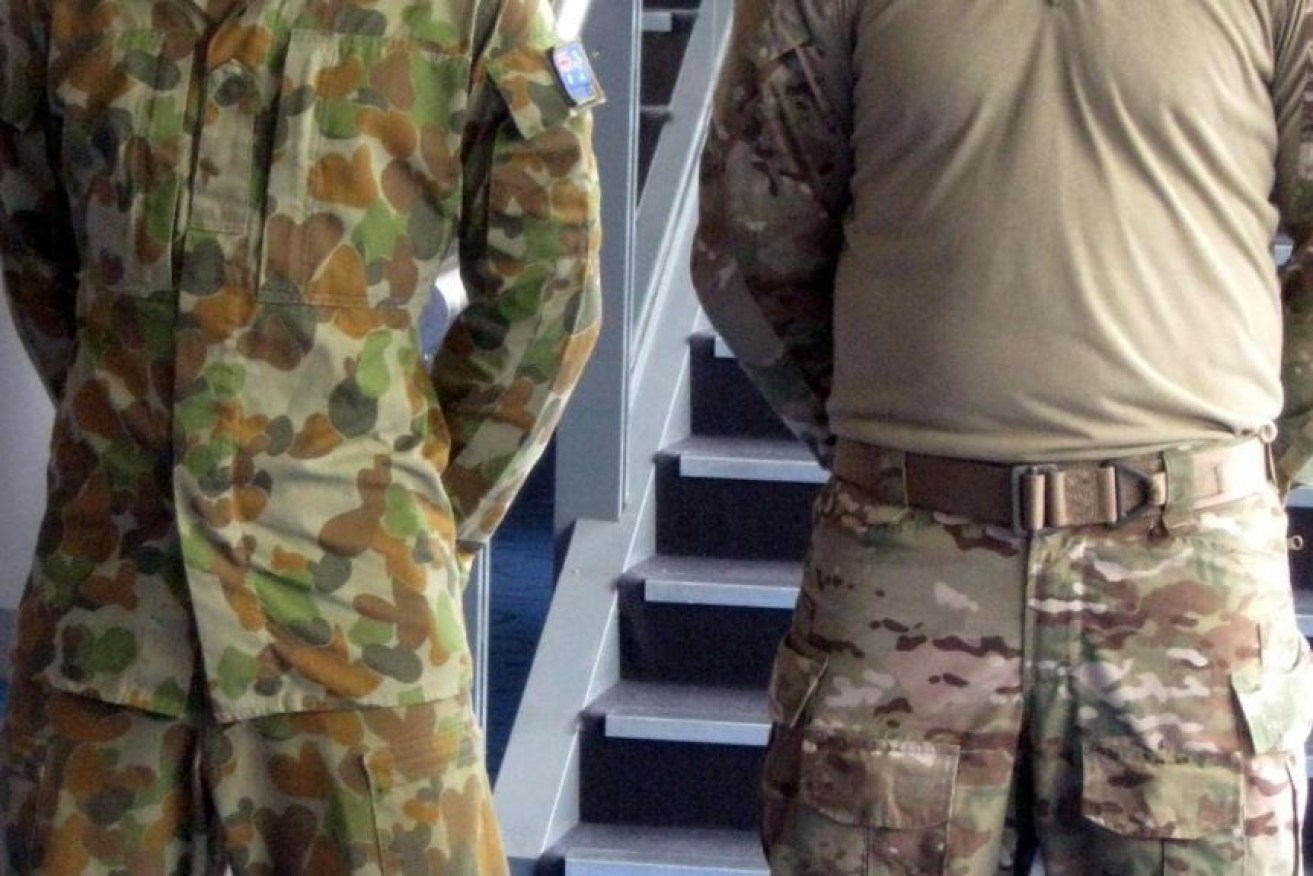Australian soldiers have a weighty problem. The proof is in their trousers

The "old" Army uniform (left) and the Multicam combat uniform, which was analysed in the research. Photo: ABC
Researchers analysing the waist sizes of Defence Force soldiers estimate more than a quarter of military personnel are overweight.
The study, published in the BMJ Military Health journal, examined more than 155,000 new field and combat pants issued across three Army sites between 2016 and 2019.
The findings led to an estimate that about 23 per cent of Army personnel were overweight, while an additional 4.5 per cent were obese.
“The Australian Army, like many Western armies, has a significant proportion of overweight personnel,” the research found.
“This high proportion has a demonstrable and negative effect on health, healthcare costs, injury likelihood, productivity and readiness.
“Part of the selection criteria for service in the military is the ability to meet the physical demands of service … overweight or obese candidates would not normally be selected.”
The average waist circumference of the adjustable pants was 90.4 centimetres.
Researchers defined “overweight” as 94 centimetres or greater for men and 80 centimetres or greater for women.
The lead author, Dr Jason Selman, conducted the research in his capacity as a Curtin University lecturer and is now the Officer in Charge of the 3rd Brigade’s Human Performance Centre in Townsville.

The paper says the average waistline of Australian soldiers has increased since 1958. Photo: ABC
Reflection of national trend
The paper said the average waistline of Australian soldiers had increased since 1958, and that the proportion of personnel estimated to be overweight was lower than other Western armies.
Michael Clements, a former Air Force medical officer and now a Townsville GP with a large ex-Defence clientele, said overweight soldiers were probably healthier than the general population.
But he said the estimate reflected the national problem of weight gain.
“The weight management in Defence should be easy,” Dr Clements said.
“We give them free access to gyms seven days a week, yet it’s evident that some of them still struggle, and I think that’s a reflection on obesity as a disease overall.”
He said soldiers might go through phases of weight gain because of injuries and illness, and he was not concerned about the effect it had on Defence’s operational capability.
“When we are preparing people to deploy, we’re always making sure they are fit for the task,” he said.
“It’s increased work for the medical staff and the managers, trying to get their team fighting fit.
“There’s a healthy number of people that need to repeat their fitness tests, but thankfully we’ve got all the support there within Defence to achieve that.
“We need a national approach to how we manage the national waistlines of Australians.”

The researchers say excess weight has a negative effect on injury likelihood, productivity and readiness. Photo: ADF
ADF responds
The ADF said about 9 per cent of candidates had a body-mass index above acceptable standards.
“Some will address this during the recruitment process and achieve the required BMI for entry,” a spokesperson said.
“The ADF have initiatives in place to enable select candidates to improve fitness in order to reach the required physical fitness standards to commence recruit training.”
The spokesperson said medical standards were in place to assist in preventing individuals being injured and to ensure ADF capability.
“Individuals not in the acceptable BMI range are deemed at higher risk of being injured during training or developing long-term health complications,” they said.
Drinking and smoking
Weight gain was not the only health problem within the Defence Force, according to other research conducted by Dr Selman.
A separate study found members of a combat brigade consumed more alcohol and tobacco, on average, than the general civilian population.
Almost one quarter of the brigade exceeded the national daily risk guideline for alcohol consumption, the study found.
Those findings were published in an Oxford Academic journal last year.
Almost one quarter of respondents to the questionnaire identified themselves as tobacco smokers and smoked more when they were deployed.
The ADF said it was supporting members in the prevention and minimisation of alcohol and tobacco-related harm.








